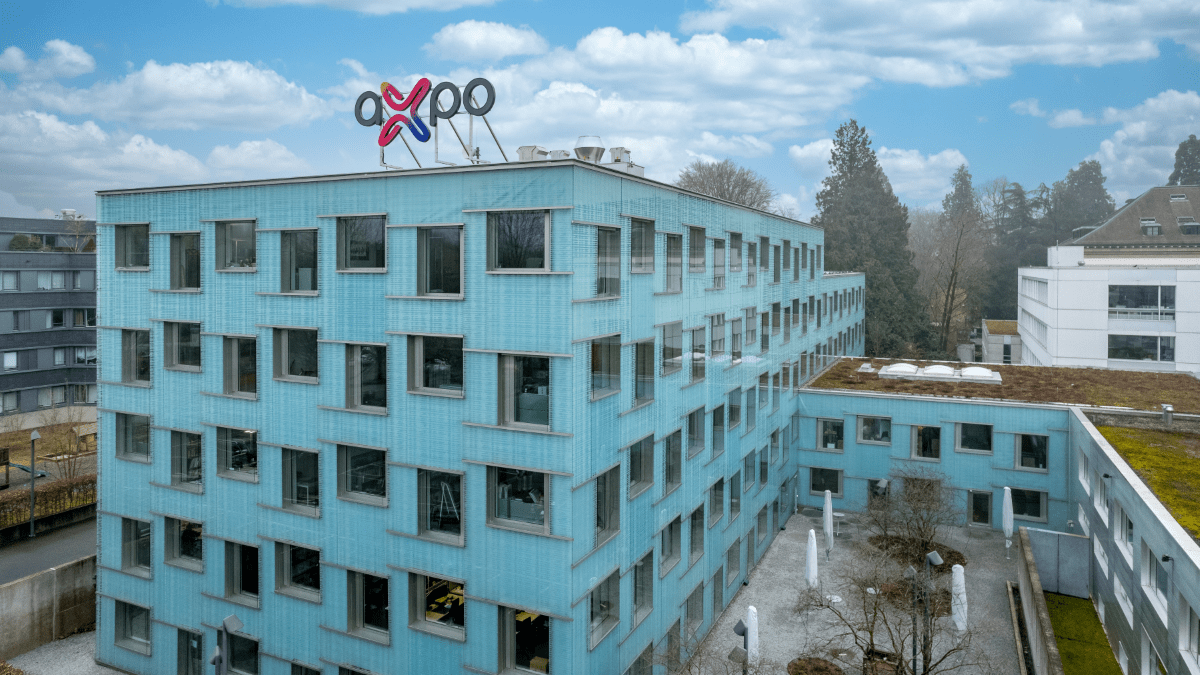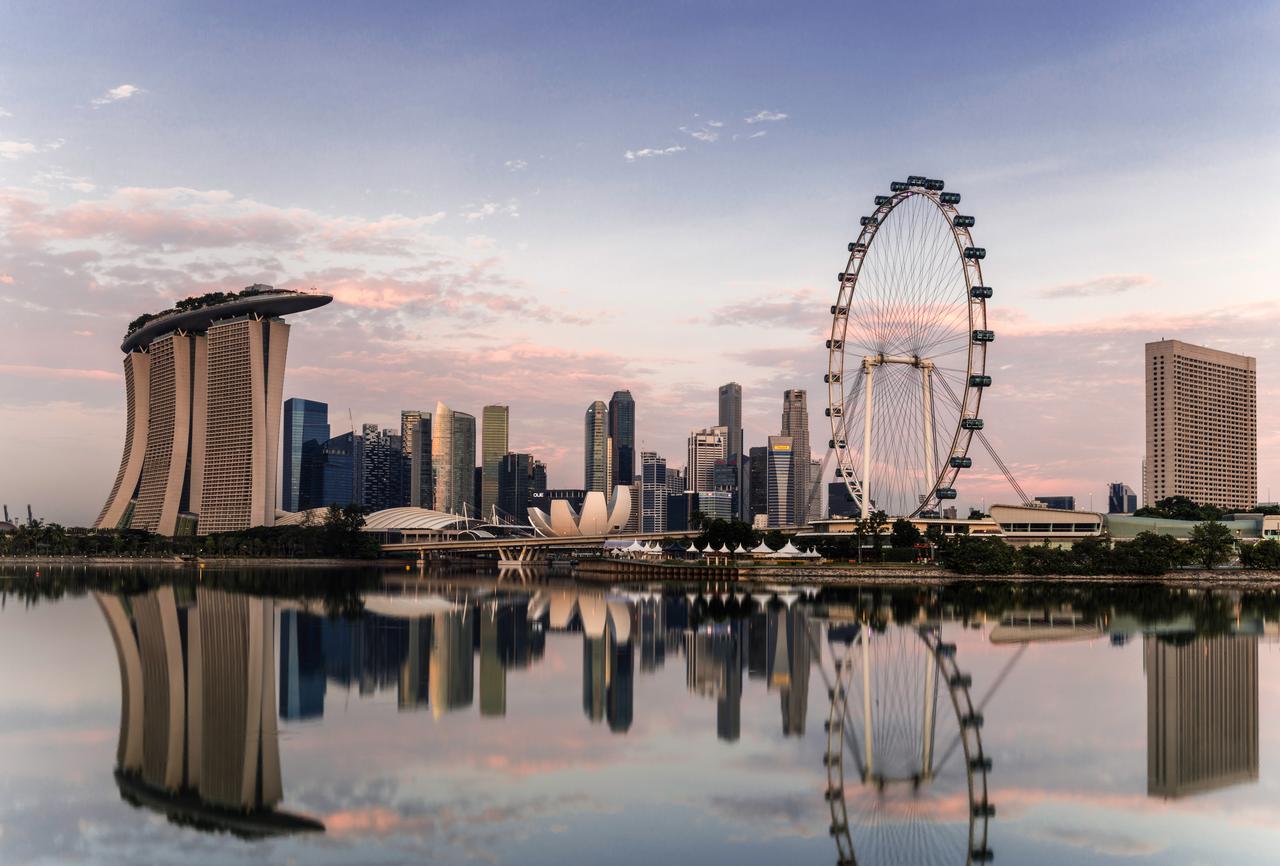19.05.2025 | Beyond security of supply
Gas to remain key in Europe for some time
Marco Saalfrank, Head of Merchant Trading at Axpo, shares fascinating insights into the world of gas trading – from Axpo’s active role in the global gas market and its contribution to energy security in Europe to the potential of biogas and biofuels as climate-friendly alternatives to fossil fuels.
How long have you worked in gas trading at Axpo?
I began my career at Axpo Solutions, then known as EGL, in October 2001. At that time, a gas team was being hired by EGL Italia to set up and manage gas supply for planned power plants in Italy. I provided support to the Italian gas team from our head office, marking my first experience in the gas business.
Afterwards, in 2008, I was made responsible for gas trading, and in the following years my role expanded to include the management of long-term gas supply and storage contracts, handling LNG trading, and the completion of our participation in the Trans Adriatic Pipeline (TAP) project.
Why is gas still an important energy commodity?
After oil and coal, gas is the third most used fuel worldwide, accounting for around 24 per cent of global energy consumption. Unlike oil and coal, this percentage is still growing, mainly due to the ongoing energy transition. Population growth, economic expansion and industrialisation are other important factors explaining the increase in gas consumption, especially in Asia.
Why is gas playing such a key role in the energy transition?
Electricity generated from gas produces 40 to 60 per cent less CO2 emissions than coal-fired plants. Not surprisingly, many countries aim to reduce their carbon emissions by focusing first on their electricity production, shifting from coal to gas generation. This transition continues across Europe, where up to 70 GW of coal-fired plants have been decommissioned in recent years, replaced by renewable energy sources and gas production. A similar trend, but on a much larger scale, is taking place in Asia, which is one of the reasons for the region’s significant increase in gas and LNG imports.
Furthermore, much of Europe’s conventional electricity generation, which once relied on nuclear and coal production for base load energy, has been replaced by intermittent renewable sources like wind and solar. While this shift is undoubtedly beneficial for the environment, the intermittent nature of wind and solar means their output is less predictable compared to the decommissioned conventional production.
As a result, there is an increasing need for back-up solutions to manage the periods when the sun isn’t shining or the wind isn’t blowing, as well as to handle daily fluctuations in renewable energy supply. This is the reason why flexible conventional solutions, combined with batteries for short-term storage, will continue to be essential for the foreseeable future. Gas is expected to play a crucial role in meeting those needs. For instance, Germany plans to build several GW of additional gas-fired power plants in strategic locations to address these challenges.
What role does gas play in ensuring energy security in Europe and Switzerland?
Since the war in Ukraine began, Russia has significantly reduced its gas deliveries to Europe by around 100 billion cubic metres (bcm), which accounts for more than 20 per cent of Europe's total gas demand.
The subsequent increase in gas prices attracted a considerable amount of LNG to Europe. Coupled with very mild winters, which significantly reduced the demand for gas, helped to mitigate the shortfall caused by the loss of Russian supplies. However, the situation in Europe remains tight.
Switzerland, with its relatively small gas demand of around 3 to 4 bcm/year – approximately one per cent of Europe’s total demand – but has no domestic gas production and no gas storage. As a result, it relies heavily on neighbouring countries like Germany, France and Italy to supply its gas. During the recent crisis, leveraging our expertise in the gas industry, Axpo facilitated access to stored gas in Italy and helped deliver gas via the TAP pipeline to some Swiss utilities.
Could you explain the differences between LNG and natural gas?
When natural gas is cooled to approximately minus 160°C at atmospheric pressure, it condenses into a liquid called liquefied natural gas (LNG). This liquid occupies about 1/600th of the volume of natural gas in its gaseous form. LNG is odourless, colourless, non-corrosive, non-explosive and non-toxic.
LNG is primarily used to transport natural gas over very long distances, especially across sea. The natural gas is liquefied in so-called liquefaction terminals, transferred to and transported by ship, and then converted back into natural gas at regasification terminals.
The main LNG exporters are the United States, Qatar and Australia, which together cover around two-thirds of global demand. The primary importing countries are Japan, China, South Korea and India. Since 2022, Europe has also become a major importer of LNG and is now competing with Asia for supplies.
Why has LNG been in such demand during the last few years?
The energy transition’s progress has resulted in decreased global conventional fuels consumption, replaced by renewable sources and natural gas. Another contributory factor in rising global gas demand is the world’s ever-increasing population, which continues to create a growing demand for more energy, including natural gas. Taken together, all these factors have increased the demand for gas, particularly in Asia, and have also driven the growth of LNG trading.
Security of supply also plays an important part in all this. The war in Ukraine and Russia’s decision to cut off gas supplies to Europe has driven the search for alternatives. However, options are limited. To address the supply shortage, Europe had to reduce the demand and increase the supply of LNG.
What challenges do you foresee in gas markets and trading over the next 10 to 15 years?
The gas market is undergoing significant change.
Over the next 10 years, despite the growing global population and the industrialisation, worldwide the demand for natural gas is expected to decline, as renewable production increases and gas consumption becomes more efficient. Meanwhile, Asia-Pacific will remain the dominant region for gas imports.
On the supply side, natural gas production is set to continue growing. The US is projected to become the leading producer and exporter of LNG as it looks to nearly double its LNG liquefaction capacity over the next five years.
In Europe, primarily due to the energy transition, the decrease in gas demand is already occurring. However, gas will still play a crucial role in providing back-up capacity as well as balancing the energy market. On the supply side, as domestic gas production continues to decline, Europe will remain reliant on imports. The extent of this reliance on LNG will depend on whether Russian gas becomes an option for Europe again, and to what degree.
Additionally, the energy transition will lead to a shift towards biogas, although the pace of this development remains uncertain.
Do external events influence gas markets and prices?
Through LNG, natural gas has become a global commodity, connecting gas-hubs across the world.
The LNG market, and by extension the broader gas market, are influenced by a variety of external events. These include weather conditions, asset outages, transportation bottlenecks, geopolitical tensions, or even acts of terrorism against infrastructure such as Nord Streams 1 and 2.
As mentioned earlier, Europe has become heavily reliant on LNG since the onset of the war in Ukraine. Any of the above events could significantly impact gas prices in Europe. The mere possibility of such events already influences the market, which helps to explain the major price volatility we are currently observing. We estimate that this situation will persist until new liquefaction plants come online in the coming years, around 2026-2027. Until then, we expect the European market to remain tight.
What are your views on the potential of biofuels and biogas replacing gas from fossil fuels?
There is huge potential here. Greenhouse gas emissions come mainly from the production of electricity, transportation, industry and agriculture. While the focus so far has mainly been on reducing emissions from electricity generation, transport and industry are increasingly drawing the attention of politicians and regulators.
In industry, there is definitely potential for biofuels and biogas to be used as a feedstock. Providing alternatives to fossil fuels, they can reduce waste and contribute to decarbonisation in various industrial sectors.
Looking at transportation, while batteries are a good solution for light vehicles, they’re not yet viable for heavy vehicles, ships or aircrafts. The reason is simple: batteries are heavy and take up space. As a result, the transportation industry is exploring other solutions such as sustainable fuels like biogas, methanol, ammonia, sustainable aviation fuel (SAF), hydrogen, and others.
Axpo is already developing small-scale LNG, LNG bunkering, hydrogen and biogas projects, and we’re also exploring the possibilities of e-methanol. In merchant trading, we’re now investigating other biogenic and synthetic fuels in which Axpo could play an important role.
Could you give us an overview of Axpo's involvement in the gas sector?
Over the past 25 years, Axpo has evolved from a company focused mainly on power generation in Switzerland to an international player in the energy commodity sector. Axpo has become a leading player in the European gas and LNG markets, also supplying gas to several clients, which are still dependent on the energy source - from retail to industrial. Today, Axpo operates in the gas business across all countries and borders in Europe, as well as in the United States and Asia.
What are the benefits for Axpo of being an active participant in global gas markets? And how does the gas price affect electricity prices?
A significant portion of the contribution generated by Axpo’s Trading and Sales division come from natural gas. That makes gas business a driver of the company’s overall success.
Furthermore, Axpo’s presence across Europe and our active participation in the global LNG market enables us to make a significant contribution to the security of supply in many European countries. In the last four years, we’ve delivered more than 100 LNG cargos to various European countries. In fact, Axpo has supported customers in Switzerland by supplying non-Russian gas and facilitating gas storage outside Switzerland.
Additionally, gas-fired power plants typically set prices during peak hours of electricity consumption, which is the most expensive generation period in the so-called ‘merit order’ of power production. As natural gas, particularly LNG, becomes a more global commodity, the price of gas in Europe is increasingly influenced by global events. Therefore, gaining a comprehensive understanding of how power and gas prices work requires a holistic view. This perspective can only be achieved by engaging with key market players and actively participating in global gas and LNG trading.
Your role at Axpo clearly keeps you busy! So how do you relax after work?
My anchor is my family - especially our six-year-old daughter. Spending time with her helps me put the stress and strains of work aside, while also reminding me to find the right balance.
As for hobbies, when I was younger, one of my favourite pastimes was sailing. Unfortunately, there isn’t much wind on the lakes near where I live and, shame on me, I switched to a motorboat instead. So, in the summer we often spend time on the lake, and in the winter, we enjoy the snow.
And is there anything about you that might surprise us?
Well, what might surprise you – especially considering that I spent nine years studying and researching in the world of physics – is that early on I wasn’t really a model student. On the contrary, I have been on the move a lot, I played soccer, and as a DJ, together with some friends, organised many large parties. I also considered a career as a football referee. Unfortunately, I wasn’t as successful as my FIFA-referee-friend who introduced me to it. But I did gain many quite interesting not to say challenging experiences in that role, which I still find useful in my job today.





